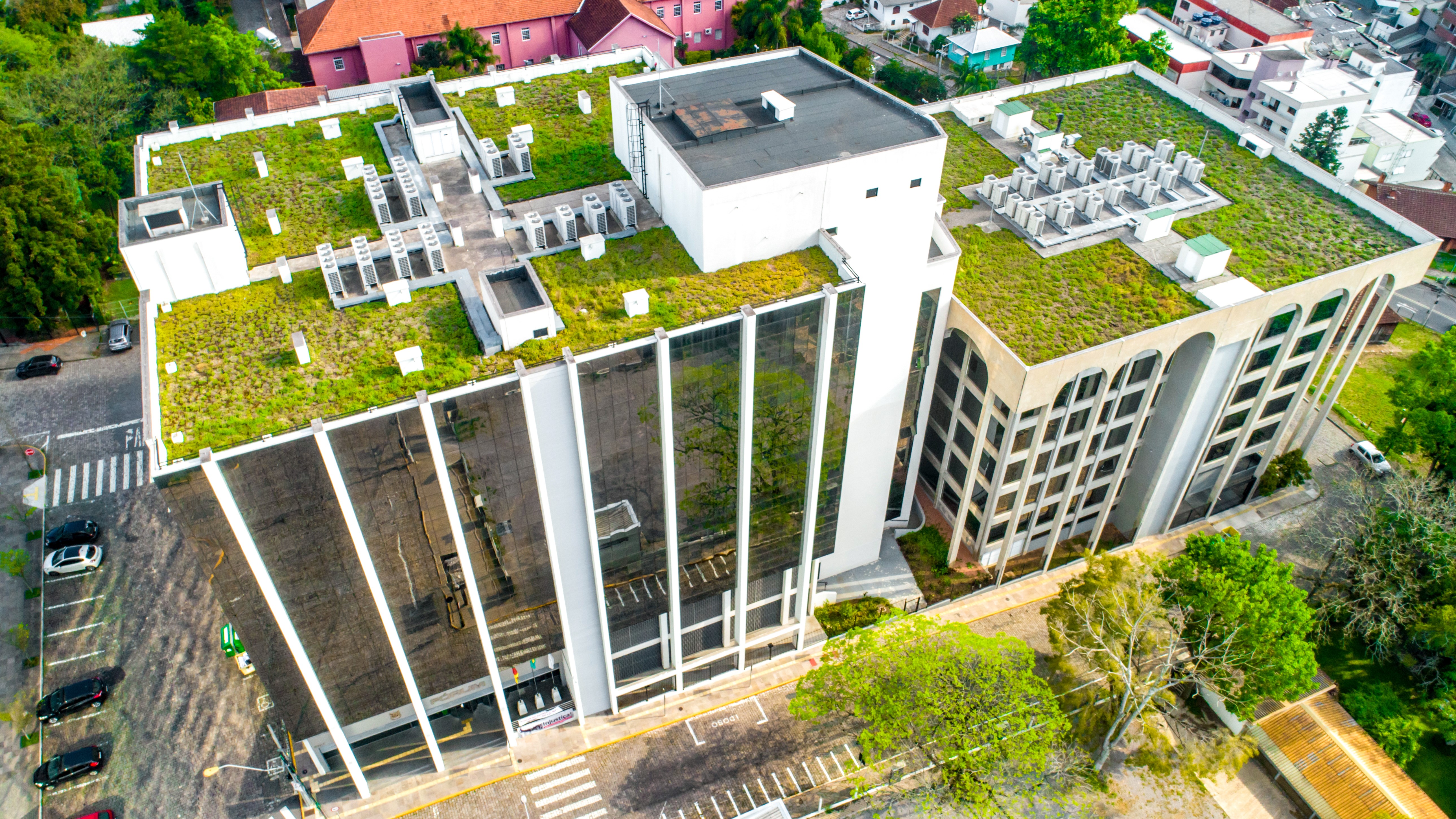
As environmental, social and governance (ESG) criteria and net-zero carbon have moved to the top of the business agenda, the impact of the built environment has, rightly so, been a key focus.
However, the financial value of real-estate portfolios is at risk from the growing potential for stranded assets. This is the term used to describe properties that will not meet future energy efficiency standards or market expectations, and as a result be increasingly likely to face early obsolescence.
Incorporating sustainability into TDD
Investors are increasingly relying on technical due diligence (TDD) that includes enhanced consideration of ESG issues to inform them how a building actually performs, how far it is at risk of becoming stranded, and how that risk might be mitigated.
This has been prompted by growing evidence that links a building's green credentials to its market value. For instance, the International Property Securities Exchange and Carbon Intelligence have observed that offices in central London with strong sustainability credentials benefit from 6–11% higher rental premiums.
In comparison, assets with poor sustainability credentials and no plans for improvement are expected to depreciate in value over coming years. Investors will be seeking to avoid assets at risk of stranding, or incurring penalties for failing to comply with tightening legislation. Assessing a building's risk and the interventions and expenditure required to protect it against stranding is becoming a key part of TDD instructions that also require enhanced consideration of ESG factors.
Understanding what certifications mean
Until the recent focus on the built environment's contribution to carbon emissions, achieving sustainable building accreditations – often for marketing purposes – has tended to be seen as a tick-box exercise. However, as the market matures, certifications are increasingly important to investors, occupiers and funds to ensure legislative and internal policy compliance.
Understanding the various accreditations is key for a TDD instruction with enhanced ESG consideration. For example, a good energy performance certificate (EPC) rating or a high Building Research Establishment Environmental Assessment Method (BREEAM) assessment does not necessarily mean that a building will be in a position to become net-zero carbon by 2050. Instead, greater attention needs to be paid to the actual energy intensity of the building.
In 2021, the government launched a consultation to inform tighter minimum energy efficiency standards (MEES) for privately rented non-domestic buildings in England and Wales. The results of that consultation are still awaited at the time of writing, but the government has confirmed that the long-term goal is for all non-domestic buildings to have an EPC rating of no lower than B by 2030. This change will affect around one million buildings.
Considering that 90% of EPCs on the UK's national register currently are rated lower than B, this could have a serious impact on valuation, because these buildings may face obsolescence all the sooner.
'Understanding the various accreditations is key for a TDD instruction with enhanced ESG consideration'
Changing models for building performance
While EPCs are a starting point when it comes to assessing and understanding energy consumption in buildings, they are only based on modelled performance. New legislation is likely to be based not only on EPCs but also actual, operational energy usage, drawing on metered data. Depending on the energy source used, the associated carbon emissions can also be calculated to determine whether a building is sufficiently efficient; that is, whether it is stranded or not.
One such scheme is the National Australian Built Environment Rating System (NABERS), which was introduced for office buildings in the UK in November 2020. The system gives a star rating to commercial office buildings' performance based on their actual energy consumption and efficiency.
Data on actual building energy use is, of course, a much more accurate measure than modelled building performance, as it takes account of operational and occupational behaviours and energy use.
Informing effective interventions
In many instances, existing buildings require improvement to reduce energy consumption and prevent them remaining or becoming stranded. However, retrofitting assets to align with net-zero carbon ambitions can be significantly disruptive and costly.
At Savills, we are seeing building owners and investors incorporating ESG considerations into their due diligence process ahead of acquisitions. This allows them to determine assets' current environmental performance, and understand the costs of and strategies for decarbonisation to meet net-zero commitments.
While the analysis of building performance should be carried out by specialists, understanding decarbonisation strategies and advising clients on how these affect the technical performance and life cycle of an asset are critical skills for building surveyors.
A number of tools are available to help surveyors model a building's stranding risk and identify how it can be improved.
-
EPC Plus report: The report models the impact of cumulative interventions on a building's EPC rating with a view to meeting the government's proposed target of B by 2030, along with the carbon emissions these would save and the cost. It should be noted again, however, that EPCs represent modelled data only, and therefore do not measure the actual energy consumption of a building.
-
Carbon Risk Real Estate Monitor (CRREM): This tool uses energy performance data to plot where the asset sits in relation to the decarbonisation required to fulfil the goals of the 2015 Paris Agreement on climate change; that is, the maximum carbon the building can generate annually if global warming is to be limited to 1.5C or 2C. As part of the due diligence process, EPC Plus data can be entered into the CRREM model to show how these interventions will affect the asset's stranding risk.
-
Asset-level net-zero pathway: To formulate a net-zero pathway for an asset, an energy specialist can create a bespoke model based on the building's actual operational schedules and loads. The model can then be used as a digital twin to simulate the building's current energy and carbon performance, and test the impact of interventions on future energy performance.
-
Climate change risk assessment: the climate resilience of an asset is assessed to predict the potential impacts it will face from future flooding, overheating and drought for instance.
These tools, used together as part of TDD with enhanced consideration of ESG issues or in stand-alone ESG due diligence, can inform decisions on investment as well as what interventions should be made and when, relative to a building's stranding risk. When considered alongside lease events, this can also inform the overall strategy for the asset from a commercial perspective, allowing interventions to be implemented at the optimum time.
The findings from such exercises will enable asset owners and investors to make the right choices early on, so their assets do not become prematurely undesirable and economically unsustainable.
Case study: modelling interventions
Savills recently undertook ESG due diligence on an industrial building where the current carbon intensity was above the CRREM curve stranding line, meaning that it was more than the level required to align with the Paris Agreement. Intervention was therefore needed to reduce the building's energy consumption and greenhouse gas emissions.
We produced an EPC Plus report, which modelled a number of interventions to improve the current baseline rating of B. Those considered included improving the air permeability of the building, and installing such features as a photovoltaic array, photoelectric daylight dimming, and heat recovery for the mechanical ventilation system.
While energy reduction measures should be carried out as soon as possible, we advised that these should take the specific context of the asset into account. As the building was let on full repairing and insuring terms with a lease expiry in 2030, the more intrusive interventions – such as solar panel installations – were therefore scheduled for then. This was deemed acceptable in this case as the building already had a B rating; but similar delays would need to be considered on an asset-by-asset basis.
Using the energy consumption figures set out in Approved Document L, implementing these measures was predicted to reduce energy consumption by around 68%. The asset model then follows a trajectory with energy intensity below the Paris Agreement requirement for a number of years from 2030.
Preventing early obsolescence for assets
The value of an asset will be affected if it does not meet occupational, investor and legislative sustainability standards. Investors therefore need to ensure that assets have plans in place to become net-zero carbon by 2050, and understand the cost implications as part of their due diligence exercises.
TDD with enhanced consideration of ESG factors can also be used by an owner to showcase a building to potential purchasers. Savills is increasingly seeing building owners and developers looking to market and publicise their assets' credentials to attract investors.
As always, to be forewarned is to be forearmed, and the knowledge gained through TDD will enable investors to maximise their assets' value in line with changing legislation and market expectations – ensuring they do not become stranded.
'The value of an asset will be affected if it does not meet occupational, investor and legislative sustainability standards'
RICS Sustainability
With the built environment estimated to be responsible for around 40% of global carbon emissions, RICS is championing sustainable practices across the built and natural environment. We are also empowering professionals to embed sustainability considerations into the way they work and better measure environmental impacts.
Click here for further information.


